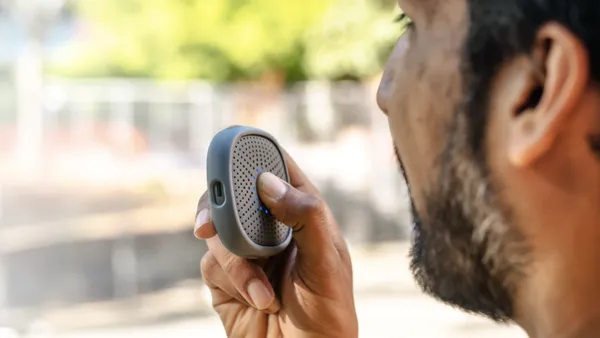Dive Brief:
- Honeywell has launched Forge for Buildings, a building systems operations and management suite that aims to improve sustainability, operational efficiency, compliance, safety and security, according to a press release.
- The vendor-agnostic solution connects to building management systems, can work across multiple asset types like HVAC and lighting and features expanded sustainability and energy management applications.
- The launch highlights a growing focus by operators on indoor air quality and energy efficiency, following new guidance and standards being set by regulators to monitor and upgrade HVAC systems.
Dive Insight:
With the Securities and Exchange Commission aiming to release its climate-disclosure rule this year, companies like Honeywell are trying to capture the market for carbon-tracking solutions.
Honeywell’s newest product features expanded capabilities of its Forge Sustainability+ for Buildings, Carbon Energy Management application, a cloud-based software developed to help building owners optimize indoor air quality, reduce energy use and meet carbon reduction goals.
The tech uses sensor data and machine learning to monitor real-time occupancy levels and space use and then automatically adjusts building controls by zone level to meet energy consumption and IAQ parameters.
Adjustments are determined by actual demand, occupancy, time and weather to help save money while keeping office temperature comfortable.
"Building operations is evolving at a rapid pace as many customers work to digitalize their facilities. This means they need better integration and enablement capabilities of their smart building applications and solutions," Kevin Dehoff, president and CEO, Honeywell Connected Enterprise, said in the release. "We are integrating our purpose-built products that support multiple assets in a building with the SaaS capabilities of Honeywell Forge to create a singular approach to building operations.”
The IAQ offerings are indicative of a greater industry focus on air quality, as multiple government agencies and regulators have begun creating standards and guidelines for ensuring safe air in buildings.
Most recently, the American Society of Heating, Refrigerating and Air-Conditioning Engineers released a draft for public review of its first-ever standard for mitigating the airborne spread of infectious pathogens in indoor spaces. The announcement comes just days after the CDC offered guidance on building ventilation, recommending at least five air changes per hour of clean air in occupied spaces.
The U.S. Environmental Protection Agency also launched the Clean Air in Buildings Challenge last March, urging building operators to assess ventilation and air cleaning systems.














